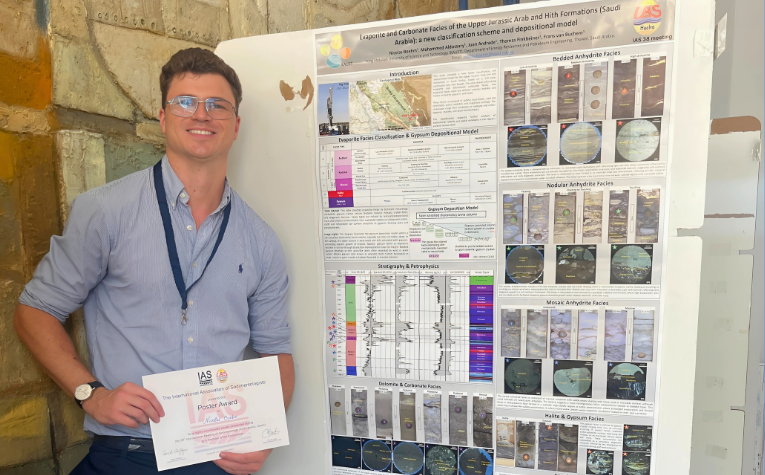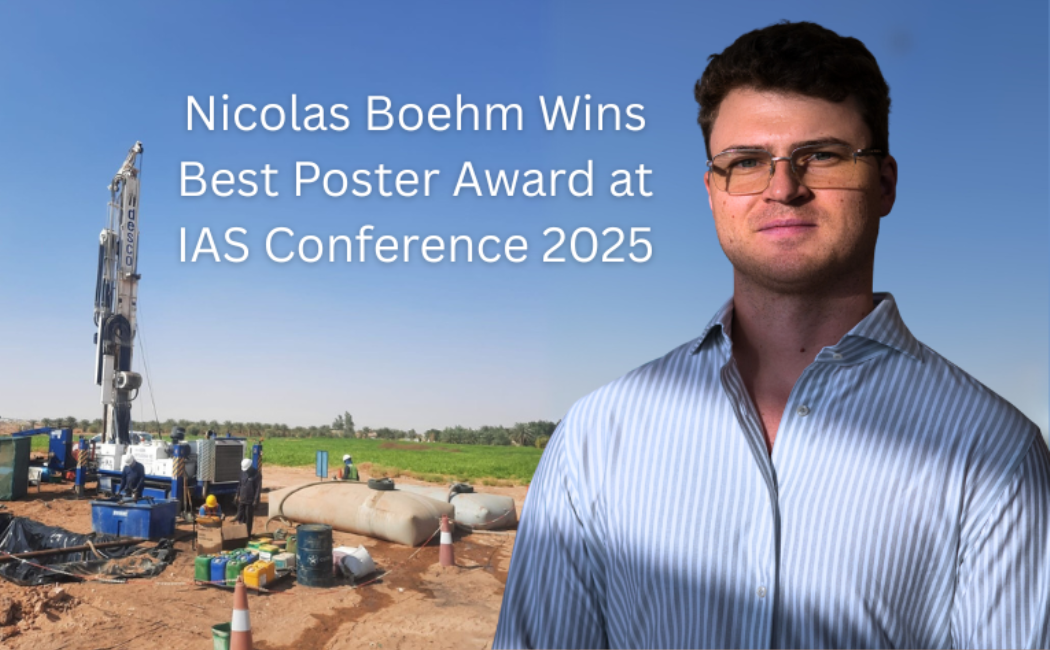By Francesca Serra
Ph.D. student Nicolas Boehm, from the SeaStar Research Group (KAUST), received the Highly Commended Poster Award at the 38th International Association of Sedimentologists (IAS) Conference in Huelva, Spain, for his work presenting a new classification scheme and depositional model for the Arab and Hith evaporite and carbonate formations in Saudi Arabia.
His poster, titled "Evaporite and Carbonate Facies of the Upper Jurassic Arab and Hith Formations (Saudi Arabia): A New Classification Scheme and Depositional Model", showcased a high-resolution study of a 210-meter core drilled near Riyadh—an unprecedented look into Saudi Arabia’s underexplored evaporite systems.
Evaporites are sedimentary rocks formed by the evaporation of saline waters, leaving behind minerals like halite (rock salt), gypsum, and anhydrite. Though often overlooked, they play a critical role in the subsurface: acting as impermeable seals that trap oil, gas, and hydrogen. Today, they are also being evaluated as natural barriers for CO₂ sequestration, a crucial strategy in the fight against climate change.
Understanding how these deposits form, evolve, and vary is essential for resource exploration and for developing future-proof climate strategies.
The research presented by Boehm—under the supervision of Professor Frans van Buchem and Professor Thomas Finkbeiner, and in collaboration with Professor Joe Cartwright of Oxford University—fills a critical gap in our understanding of the heterogeneity and depositional mechanisms of these formations. His new classification scheme and depositional model provide essential tools for both academic research and industrial application in a region central to global energy dynamics.
The International Association of Sedimentologists (IAS) Conference is a premier global forum for sedimentary geoscience, where researchers from across the world gather to share the latest discoveries shaping our understanding of Earth's dynamic systems. The 2025 edition highlighted research spanning modern sedimentary processes to ancient depositional environments, with special emphasis on energy, climate, and sustainable subsurface management.

.png?sfvrsn=77e474cc_0)
.png?sfvrsn=196240a8_0)
